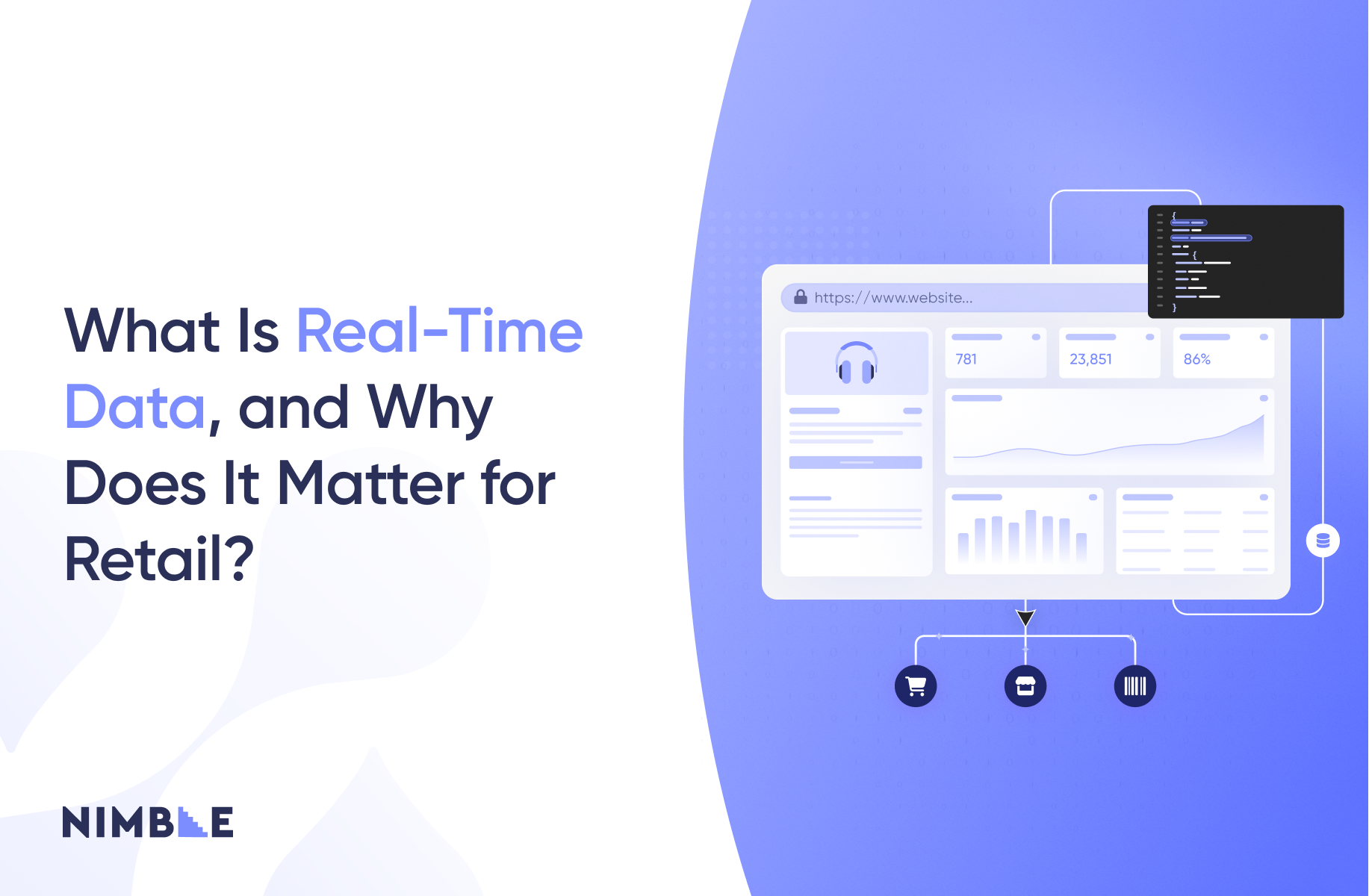Cleaning Data & Debugging Scraping Ops in 2024
Cleaning Data & Debugging Scraping Ops in 2024 Continuing with our series on the state of the web scraping industry in 2024, we now turn…


Continuing with our series on the state of the web scraping industry in 2024, we now turn our attention to the Cleaning and Debugging phases in the CCCD framework. If you’re unfamiliar with the CCCD framework, we recommend heading back to our Definitive Guide to Web Scraping in 2024 guide, where we outline the framework and briefly review each phase.
In this guide, we instead focus on the Cleaning and Debugging phases, and dive into the techniques, challenges, and tools available today. We review some of the latest technological breakthroughs, how they are changing the face of our industry, and compare them head to head in a thorough competitive analysis.
Structuring HTML into useable formats like JSON or CSV has long been one of the great challenges of web scraping. Read on to discover this year’s solutions, and what to expect in the coming year.
Cleaning
In the CCCD scraping framework, the cleaning phase, encompassing parsing and validation, is pivotal for ensuring the accuracy and utility of the acquired data for subsequent processing. Parsing in a web scraping context refers to the process of structuring the scraped HTML data into a more usable or understandable format, which is a precursor to cleaning and validating the data before analysis or application.
This phase also necessitates a post-parsing validation step to ensure data accuracy and relevance. This step is instrumental in identifying any inconsistencies or errors, aligning the data with the scraping objectives, and laying a solid foundation for subsequent processing or analysis. Let’s dive into each of these steps in more detail.
Parsing
As previously highlighted, parsing is a crucial step in the data extraction process, where the raw HTML content retrieved during data collection is dissected and structured into a more readable and usable format such as JSON, CSV, and others. This process aids in isolating the desired information from the potentially vast and cluttered raw data. Common parsing techniques include:
- Traditional Parsing Methods:
- DOM Parsing: Delving into a webpage’s HTML structure via its Document Object Model (DOM) facilitates the targeted extraction of essential real estate data, albeit struggling with pages demanding continuous interaction or JavaScript execution.
- HTML Parsing: Suited for static web pages, this method can fall short in extracting data from dynamic or client-side scripted pages, which are prevalent in real estate listings.
- AI-Powered Parsing: Tools like GPT-4 revolutionize parsing with human-like text understanding, significantly aiding in navigating complex web pages. While these advanced tools might be slower and costlier than traditional methods, and occasionally misinterpret text necessitating cleanup, they mark a significant stride in parsing efficiency and accuracy.
- Cleaning Duplicates: Deduplication is paramount to maintaining data integrity, especially when dealing with voluminous data. Methods like Hashing and Canonicalization prove to be effective, albeit computationally demanding as the data scales up. A specific challenge in this context is the computational overhead, especially when processing extensive data.
- Data Validation: Ensuring the data conforms to requisite standards is pivotal for its subsequent utilization. Dimensional Analysis and Machine Learning stand as viable approaches to gauge and enhance data accuracy. However, the volatile nature of web content, especially in verticals where data fluctuates frequently, poses a significant challenge. Semantic Testing, although in its infancy, holds the potential to mitigate such challenges in the near future.
Popular Parsing Tools
Here are some of the most popular tools used for parsing in 2023:
- Beautiful Soup: A Python library that parses HTML and XML files, creating parse trees that aid in data extraction. It offers methods for navigating, searching, and modifying parse trees, making it suitable for static web pages where data doesn’t change dynamically.
- ScrapeStorm: An AI-powered web scraping tool with a visual, no-code interface that utilizes AI to identify lists, tables, and pagination buttons automatically.
- Scrapy: A highly popular open-source web crawler and collaborative web scraping tool in Python, it helps extract data efficiently from websites, processes them as needed, and stores them in your preferred format (JSON, XML, and CSV).
- Zyte Parsing Templates APIs: An advanced web scraping solution that simplifies data extraction with pre-built templates, eliminating the need for programming skills. Zyte offers user-friendly APIs and comprehensive guides, making it accessible for users of various expertise levels.
- Nimble AI Parsing Skills: Nimble provides automated parsing as part of its web scraping solutions. It’s known for its AI-powered parsing capabilities which can handle dynamic web pages effectively, making data extraction more streamlined and efficient, especially in complex and dynamically changing web environments.
Comparative Analysis: Web Parsing with BeautifulSoup, ChatGPT-4, and Nimble AI Parsing Skills
This comparative analysis examines three approaches to web parsing: the well-established BeautifulSoup library, a staple in Python programming; the innovative AI-driven capabilities of ChatGPT-4; and Nimble AI Parsing Skills, a unique hybrid solution that integrates traditional parsing methods with AI-powered LLM parsing. The focus of this experiment is a practical test of extracting rental property details from a listing on Realtor.com, specifically the property located at 6211 N Kenmore Ave, Chicago, IL 60660.
By conducting this experiment on a live web page listing, we can evaluate how each method handles real-world variability and complexity.
Overview of Parsing Approaches:
- BeautifulSoup: Requires manual inspection of webpages to extract HTML tags and attributes. Developers write scripts based on this analysis to parse the content. This method demands a detailed understanding of the web page’s structure.

Beautiful Soup implementation

BeautifulSoup Output
- ChatGPT-4: Accessible via API or web interface, ChatGPT-4 can be directed to parse web content. It uses advanced natural language processing techniques to interpret and extract data based on given instructions.

ChatGPT-4 Prompt

ChatGPT-4 Parsing Output
- Nimble AI Parsing Skills: combines the best of LLM and manual technology. Users can select from a list of Nimble-provided schemas, known as Skills, designed to extract commonly needed data points from popular verticals, such as product data, SERP listings, and more. Additionally, users can create custom Skills, wherein the user defines the desired data points in plain text (eg: product SKU), or more accurately using CSS selectors and other methods. Nimble AI Parsing Skills auto-heal when webpages change, regenerating parsers whenever they no longer extract the desired data points. Users can also manually create, update, or delete parsers in their repository, adding flexibility to the automated process.

Parsing Template generated by Nimble AI Parsing Skills

Nimble AI Parsing Skills: Output
Anticipated Developments:
Transitioning into 2024, the advent of AI and statistical methodologies could further refine data integrity testing and validation. These advancements could be instrumental in overcoming challenges in ensuring data accuracy, thereby significantly augmenting the Cleaning phase of the CCCD framework in web scraping endeavors.
Debug
The Debugging phase in the CCCD framework is crucial for ensuring robust operation amid real-world challenges and ensuring data quality and reliability in mission-critical applications. This phase involves identifying, notifying, and resolving issues that may arise in the Crawling, Collection, and Cleaning phases, ensuring the scraping pipeline functions seamlessly.
Here’s a deeper look into debugging across the CCC phases:
- Crawling Phase
Monitoring: Continuous monitoring for HTTP error codes, timeouts, and other network-related issues is vital.
Key Activities:
- Website Relevance Verification: Continuously monitoring and verifying the relevance of discovered websites to ensure they align with the targeted data collection objectives.
- Comprehensive Page Detection: Implementing checks to detect all relevant pages within each website, ensuring no significant data sources are overlooked.
- URL Management and Organization: Monitoring the process of managing and organizing relevant URLs to ensure they are correctly categorized and readily accessible for the subsequent Collection phase.
Example Issue: Misidentification of irrelevant websites as pertinent due to outdated keyword filters.
Add a asset with the story of the Crawling over timeline / technology / use cases. I want to see here more “Story” and not just data”
- Collection Phase
Monitoring: Track collection operations and effectively monitor and fine-tune the proxy network to detect anti-bot blocks, changes to sources’ UX structures, unexpected errors, and ensure correct data access, especially with dynamically loaded data.
Key Activities:
- Monitoring and Detection Systems: Using advanced tools to identify anti-bot blocks, web source’s structure changes, ensuring efficient and accurate data scraping.
- Proxy Reliability Testing: Regular assessments for speed, uptime, and response accuracy, replacing ineffective proxies.
- Geolocation and Rotation Checks: Ensuring diverse geographic coverage and effective IP rotation to avoid detection and access regional data.
- Anonymity and Security Assessments: Auditing for anonymity, checking for revealing headers, and implementing encryption for secure data transmission.
- Load Balancing and Scalability Testing: Evaluating the network’s ability to handle varied loads and scaling needs.
Example Issue: Due to inadequate IP proxy rotation, the system could encounter frequent access denials, as repeated requests from reused IPs lead to swift bans by target websites.
- Cleaning Phase
Monitoring: Ensure the correct data is being collected by validating the parsed data for consistency, accuracy, and completeness.
Key Activities:
- Data Validation: Monitoring and validating the parsed data to ensure its consistency, accuracy, and completeness.
- Error Handling for Data Parsing: Addressing and correcting issues related to incorrectly parsed data, which can arise from unexpected changes in HTML structures or similar anomalies.
Example Issue: Incorrectly parsed data due to unexpected HTML structure.
Best Practices in Debugging Web Scraping Pipelines (2023):
- Automated Testing: Employ automated testing frameworks to simulate different scenarios and identify potential issues in the scraping pipeline.
- Logging and Alerting: Implement comprehensive logging and real-time alerting to notify of any issues immediately.
- Version Control: Use version control systems to track changes in the scraping scripts, making it easier to identify and revert problematic changes.
- Continuous Monitoring: Utilize monitoring tools to keep track of the scraping processes, server resources, and data quality.
Popular Debugging Tools
- Workflow and Task Management for Web Scraping:
- Apache Airflow: Airflow is useful for scheduling and managing complex scraping tasks. It allows you to define workflows as code, making it easier to create, monitor, and adjust scraping processes as needed.
- Luigi: Like Airflow, Luigi is beneficial for managing dependencies in a scraping process. It’s particularly good for sequential and conditional task execution in web scraping.
- Real-Time Monitoring and Distributed Task Management:
- Celery with Flower: Celery is a task queue that can distribute scraping tasks across multiple workers, ideal for high-volume scraping. Flower provides real-time monitoring of these tasks, an essential feature for debugging and performance optimization in web scraping.
- Scrapyd: As a tool specifically designed for Scrapy spiders, Scrapyd is very relevant for deploying, running, and monitoring Scrapy-based web scraping projects.
- Code Debugging and Quality Assurance:
- IBM Rational Software Analyzer: This tool is beneficial for early detection of defects in scraping scripts, helping to ensure high-quality code from the outset.
- Sourcery CodeBench: While not a direct tool for web scraping, it can be useful for debugging and optimizing the performance of scraping scripts, particularly when dealing with complex scraping tasks.
- Error Tracking and Log Analysis:
- Rollbar: Useful for real-time error monitoring and debugging, especially for web scraping tasks that involve complex front-end interactions.
- Bugfender: Offers remote logging capabilities, which is valuable for identifying and resolving issues in web scraping applications, particularly those running in varied environments.
- Interactive and Real-Time Debugging:
- Microsoft Visual Studio Code: This IDE offers extensive debugging capabilities, making it suitable for diagnosing and fixing issues in web scraping code, especially with its support for Python and JavaScript, the primary languages used in web scraping.
- Rookout: Enables live debugging and data collection, which can be crucial for resolving issues in web scraping processes in real-time, particularly in cloud or server-based environments.
- Performance Monitoring and Profiling:
- Fusion Reactor: Particularly useful for Java-based web scraping tools, offering live debugging and performance monitoring, which is key in optimizing and maintaining scraping efficiency.
- IDA Pro: While more specialized, IDA Pro can be useful in web scraping for reverse engineering complex code or obfuscated JavaScript encountered during scraping.
- Version Control and Continuous Integration/Deployment:
- GitHub for Version Control: GitHub is crucial for web scraping projects, offering robust tools for code tracking, branching, and issue management. It ensures efficient collaboration and high-quality code maintenance.
- GitHub Actions for CI/CD: GitHub Actions automates testing and deployment of web scraping scripts, enabling consistent and error-free updates. It is particularly effective for scheduling and managing periodic scraping tasks.
By selecting tools tailored to specific aspects of web scraping – such as task management, code quality, performance monitoring, or user interface debugging – developers and teams can build more robust, efficient, and effective web scraping solutions. This tailored approach ensures that each phase of the web scraping process, from development to deployment and monitoring, is optimized for the best results.
Ready to put theory into practice?
If you’ve already read our Definitive Guides to Web Scraping and Crawling & Collecting Data in 2024, you now have a thorough knowledge of the latest tools, solutions, and challenges faced by web scrapers in 2024.
However, putting all of that information into practice may seem overwhelming. To help you make some tangible next steps, we’ve prepared the Web Scraping Landscape & Predictions in 2024.
Our detailed landscape will help you quickly find the solutions most relevant to the areas your unique scraping workflow needs, and our predictions for 2024 will help you plan ahead by keeping one eye on what’s to come.
FAQ
Answers to frequently asked questions






.png)










